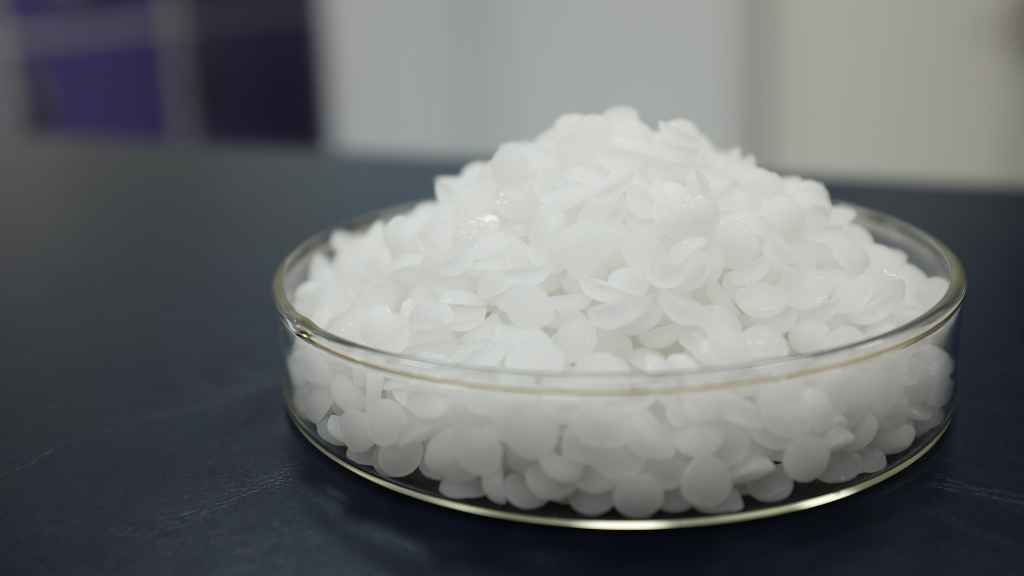Blog
Sodium Hydroxide Molar Mass Explained: A Comprehensive Guide
Sodium hydroxide molar mass is a crucial topic in the field of chemistry. Understanding sodium hydroxide molar mass is essential for anyone studying chemical reactions and formulas. Molar mass is the mass of one mole of a substance and is expressed in grams per mole (g/mol). In this article, we will explore the sodium hydroxide molar mass in detail, its calculation, significance, and applications in various fields.
What is Sodium Hydroxide?
Sodium hydroxide, commonly known as lye or caustic soda, is an inorganic compound with the formula NaOH. It is a white solid that is highly soluble in water, forming a strong alkaline solution.
Understanding Molar Mass
Before diving deeper into sodium hydroxide molar mass, let’s briefly understand what molar mass is. Molar mass is the mass of a given substance (chemical element or chemical compound) divided by the amount of substance in moles. The molar mass of an element is the same as its atomic mass in grams per mole.

Calculation of Sodium Hydroxide Molar Mass
To calculate, you need to consider the atomic masses of its constituent elements:
- Sodium (Na): The atomic mass of sodium is approximately 22.99 g/mol.
- Oxygen (O): The atomic mass of oxygen is approximately 16.00 g/mol.
- Hydrogen (H): The atomic mass of hydrogen is approximately 1.01 g/mol.
Now, you can calculate the sodium molar mass using the formula:Molar mass of NaOH=mass of Na+mass of O+mass of H\text{Molar mass of NaOH} = \text{mass of Na} + \text{mass of O} + \text{mass of H}Molar mass of NaOH=mass of Na+mass of O+mass of H Molar mass of NaOH=22.99 g/mol+16.00 g/mol+1.01 g/mol=40.00 g/mol\text{Molar mass of NaOH} = 22.99 \, \text{g/mol} + 16.00 \, \text{g/mol} + 1.01 \, \text{g/mol} = 40.00 \, \text{g/mol}Molar mass of NaOH=22.99g/mol+16.00g/mol+1.01g/mol=40.00g/mol
Importance of Sodium Hydroxide Molar Mass
Understanding sodium hydroxide molar mass is vital for several reasons:
- Chemical Reactions: Knowing the molar mass allows chemists to calculate the amounts of reactants and products involved in chemical reactions.
- Stoichiometry: It aids in stoichiometric calculations, which help determine the proportions of elements in compounds.
- Industrial Applications: Accurate molar mass measurements are essential in various industries that use it, ensuring the correct formulation of products.
Applications of Sodium Hydroxide
Sodium hydroxide has numerous applications across different industries:
- Manufacturing: It is widely used in the production of paper, textiles, and detergents.
- Water Treatment: It helps in neutralizing acidic water and is employed in wastewater treatment to remove heavy metals.
- Laboratory Use: it is frequently used in laboratories for pH adjustment and titrations.
Safety Precautions
While it is highly useful, it is also caustic and can cause severe burns.
- Protective Gear: Always wear gloves, goggles, and protective clothing.
- Storage: Store sodium hydroxide in a cool, dry place, away from incompatible substances.
- First Aid: In case of contact with skin or eyes, rinse immediately with plenty of water and seek medical attention.
Conclusion
In conclusion, it is an essential aspect of chemistry that plays a significant role in various applications and industries. Knowing how to calculate and understand the molar mass can greatly enhance your understanding of chemical reactions and their applications in real life.
